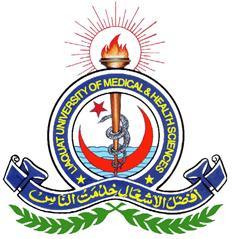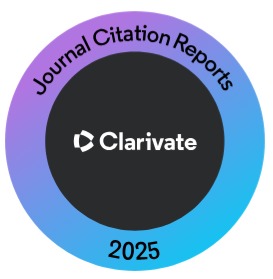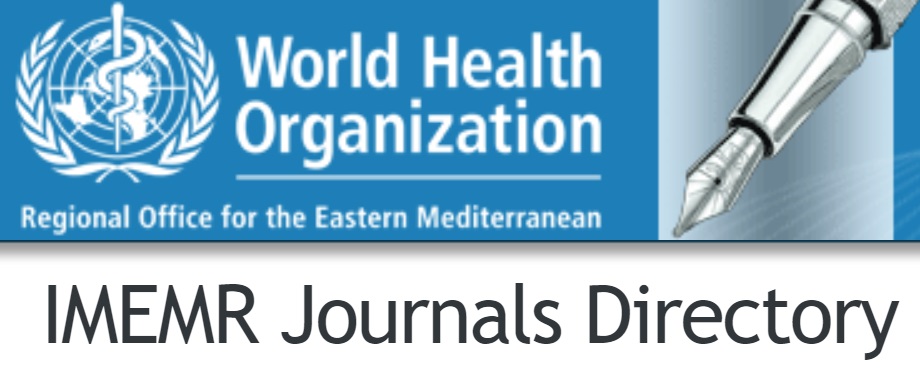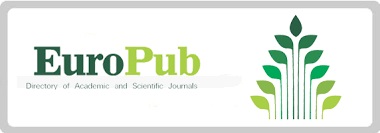Barthel Index Score and Total Serum Cholesterol Levels Correlation as Prognostic Tool for Acute Ischemic Stroke
Keywords:
Barthel Index score, Total serum cholesterol, Transient ischemic stroke, Computed tomography (CT) scan.Abstract
OBJECTIVE: To find a correlation between total serum cholesterol (TSC) in acute ischemic stroke and their prognosis is assessed employing the Barthel Index (BI) score.
METHODOLOGY: This prospective study was conducted at Medical Emergency of Allied Hospital Faisalabad and Social Security Hospital Lahore from 2020 to 2021. The written informed consent was obtained. In 58 sudden-onset acute ischemic stroke subjects, 36 males and 22 females were selected by purposive sampling. Patients were aged between 18-50 years. The BI scoring system was used instantly on admission day, followed up at 48 hours, two weeks and one month of stroke to determine everyday routine in Personal care. Patients with a previous history of some stroke, transient ischemic attack (TIA), diabetes mellitus (DM), renal dysfunction, cardiac malfunctions, or valvular heart diseases were excluded. Stroke patients having an acute ischemic stroke for the first time were diagnosed and confirmed by non-contrast computed tomography (CT) scan and statistical analysis using SPSS version 17.0.
RESULTS: The mean BI score taken at four intervals was significantly correlated to the levels of TSC. The acute ischemic stroke patients with TSC level > 200 mg/dl showed better prognosis in comparison to those with TSC level < 200 mg/dl.
CONCLUSION: The present study on acute ischemic stroke patients suggests that TSC is correlated to a better future outcome as assessed by the BI score. This study demonstrates that high total serum cholesterol (HTSC) can be considered as a marker to anticipate the prognosis in patients of acute ischemic stroke.
References
Saini V, Guada L, Yavagal DR. Global epidemiology of stroke and access to acute ischemic stroke interventions. Neurology. 2021; 97(20_Supplement_2): S6-S16. doi: 10.1212/WNL.0000000000012781.
Sherin A, Ul-Haq Z, Fazid S, Shah BH, Khattak MI, Nabi F. Prevalence of stroke in Pakistan: Findings from Khyber Pakhtunkhwa integrated population health survey (KP-IPHS) 2016-17. Pak J Med Sci. 2020; 36(7): 1435-1440.
Malik A, Khan MA, Zehra F, Wasay M, Khan RN, Aisha. Potential risk factors of stroke: a community-based, cross-sectional study from Sindh province of Pakistan. Khyber Med Univ J. 2020; 12(1): 25-8.
Yang S-H, Liu R. Four decades of ischemic penumbra and its implication for ischemic stroke. Transl Stroke Res. 2021; 12(6): 937-45. doi: 10.1007/s12975-021-00916-2. Epub 2021 Jul 5.
Huang Y-Q, Huang J-Y, Liu L, Chen C-L, Yu Y-L, Tang S-t et al. Relationship between triglyceride levels and ischaemic stroke in elderly hypertensive patients. Postgrad Med J. 2020; 96(1133): 128-33. doi: 10.1136/postgradmedj-2019-136961. Epub 2019 Oct 14.
Amarenco P, Kim JS, Labreuche J, Charles H, Abtan J, Béjot Y et al. A comparison of two LDL cholesterol targets after ischemic stroke. New Engl J Med. 2020; 382(1): 9. doi: 10.1056/NEJMoa1910355. Epub 2019 Nov 18.
Jung E, Kong SY, Ro YS, Ryu HH, Shin SD. Serum cholesterol levels and risk of cardiovascular death: a systematic review and a dose-response meta-analysis of prospective cohort studies. Int J Environ Res Public Health. 2022; 19(14): 8272. doi: 10.3390/ijerph19148272.
Kuriakose D, Xiao Z. Pathophysiology and treatment of stroke: present status and future perspectives. Int J Mol Sci. 2020; 21(20): 7609. doi: 10.3390/ijms21207609.
Wang Y-C, Chang P-F, Chen Y-M, Lee Y-C, Huang S-L, Chen M-H et al. Comparison of responsiveness of the Barthel Index and modified Barthel Index in patients with stroke. Disabil Rehabil. 2023; 45(6): 1097-1102. doi: 10.1080/09638288.2022.2055166. Epub 2022 Mar 31.
Khan MA, Muhammad I, Murtaza Z, Shahzeb. Knowledge about the common risk factors among patients presenting with acute stroke. Khyber J Med Sci. 2018; 11(1): 141-145.
Wadström BN, Wulff AB, Pedersen KM, Jensen GB, Nordestgaard BG. Elevated remnant cholesterol increases the risk of peripheral artery disease, myocardial infarction, and ischaemic stroke: a cohort-based study. Eur Heart J. 2022; 43(34): 3258-69. doi: 10.1093/eurheartj/ehab705.
Han BH, Han K, Yoon KH, Kim MK, Lee SH. Impact of Mean and Variability of High?Density Lipoprotein?Cholesterol on the Risk of Myocardial Infarction, Stroke, and Mortality in the General Population. J Am Heart Assoc. 2020; 9(7): e015493. doi: 10.1161/JAHA.119.015493. Epub 2020 Apr 6.
Park J-B, Kim DH, Lee H, Hwang I-C, Yoon YE, Park HE et al. Mildly abnormal lipid levels, but not high lipid variability, are associated with increased risk of myocardial infarction and stroke in "statin-naive" young population a nationwide cohort study. Circ Res. 2020; 126(7): 824-35. doi: 10.1161/CIRCRESAHA.119.315705. Epub 2020 Jan 24.
Lee EY, Sohn MK, Lee JM, Kim DY, Shin YI, Oh GJ et al. Changes in long-term functional independence in patients with moderate and severe ischemic stroke: comparison of the responsiveness of the Modified Barthel Index and the Functional Independence Measure. Int J Environ Res Public Health. 2022; 19(15): 9612. doi: 10.3390/ijerph19159612.
Wang S, Zhai H, Wei L, Shen B, Wang J. Socioeconomic status predicts the risk of stroke death: a systematic review and meta-analysis. Prevent Med Rep. 2020; 19: 101124. doi: 10.1016/j.pmedr.2020.101124.
Isuru A, Hapangama A, Ediriweera D, Samarasinghe L, Fonseka M, Ranawaka U. Prevalence and predictors of new-onset depression in the acute phase of stroke. Asian J Psychiatr. 2021; 59: 102636. doi: 10.1016/j.ajp.2021.102636. Epub 2021 Apr 6.
Maalouf E, Hallit S, Salameh P, Hosseini H. Eating behaviors, Lifestyle, and Ischemic Stroke: A Lebanese Case-Control Study. Int J Environ Res Public Health. 2023; 20(2): 1487. doi: 10.3390/ijerph20021487.
Lu R, Qin Y, Xie C, Tan X, Zhu T, Tan J et al. Secondhand smoke exposure can increase the risk of first ischemic stroke: a 10.7-year prospective cohort study in China. Ann Epidemiol. 2024; 92: 25-34. doi: 10.1016/j.annepidem.2024.02.005.
Xiao B, Cao C, Han Y, Yang F, Hu H, Luo J. A non-linear connection between the total cholesterol to high-density lipoprotein cholesterol ratio and stroke risk: a retrospective cohort study from the China Health and Retirement Longitudinal Study. Eur J Med Res. 2024; 29(1): 175. doi: 10.1186/s40001-024-01769-9.
Bindal P, Kumar V, Kapil L, Singh C, Singh A. Therapeutic management of ischemic stroke. Naunyn-Schmiedeberg's Archives of Pharmacology. 2023: 397: 2651-2679. doi: 10.1007/s00210-023-02804-y.
Downloads
Published
How to Cite
Issue
Section
License
Copyright (c) 2024 Journal of Liaquat University of Medical & Health Sciences

This work is licensed under a Creative Commons Attribution-NonCommercial-ShareAlike 4.0 International License.
Submission of a manuscript to the journal implies that all authors have read and agreed to the content of the undertaking form or the Terms and Conditions.
When an article is accepted for publication, the author(s) retain the copyright and are required to grant the publisher the right of first publication and other non-exclusive publishing rights to JLUMHS.
Articles published in the Journal of Liaquat University of Medical & health sciences are open access articles under a Creative Commons Attribution-Noncommercial - Share Alike 4.0 License. This license permits use, distribution and reproduction in any medium; provided the original work is properly cited and initial publication in this journal. This is in accordance with the BOAI definition of open access. In addition to that users are allowed to remix, tweak and build upon the work non-commercially as long as appropriate credit is given and the new creations are licensed under the identical terms. Or, in certain cases it can be stated that all articles and content there in are published under creative commons license unless stated otherwise.























